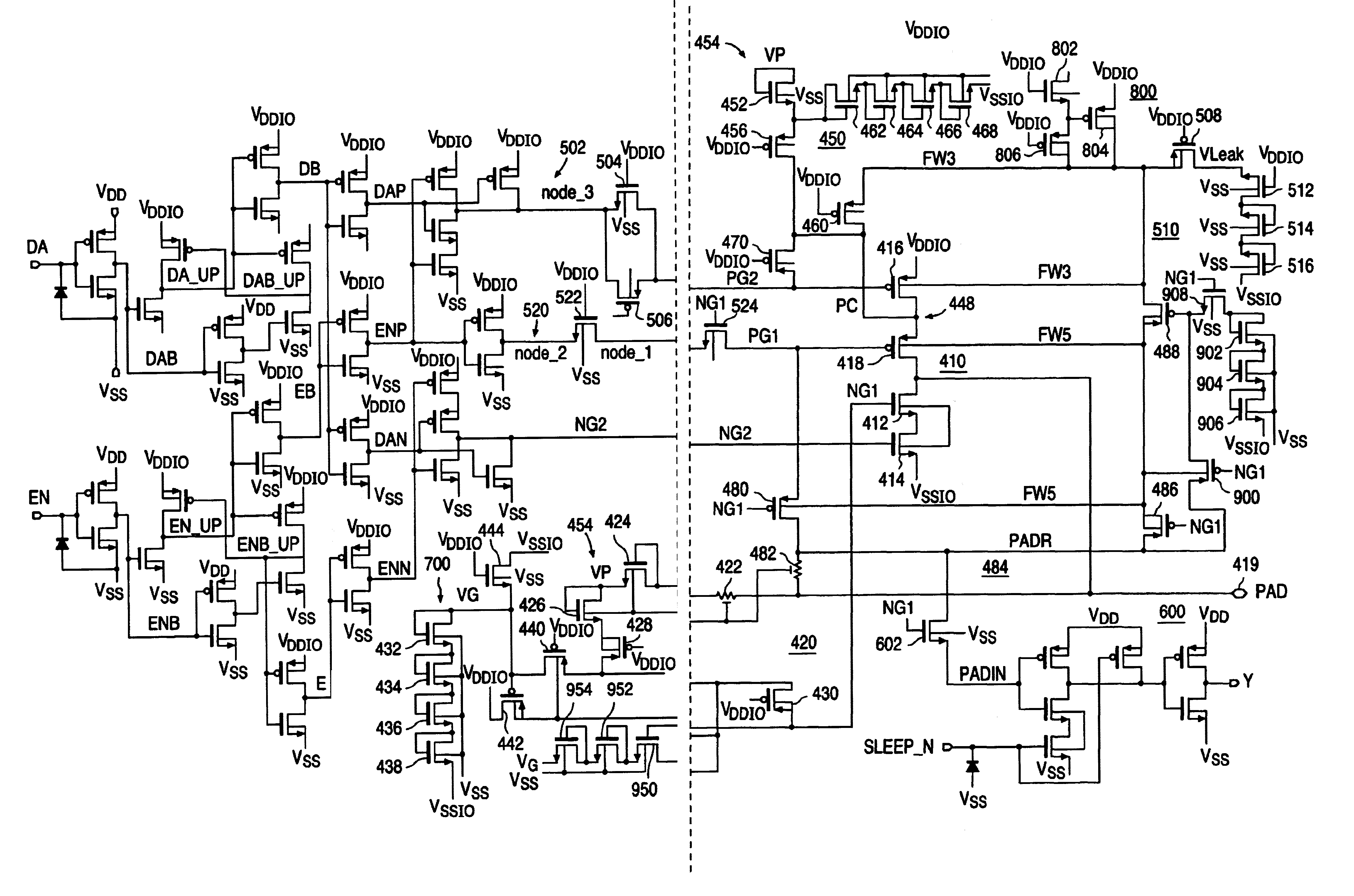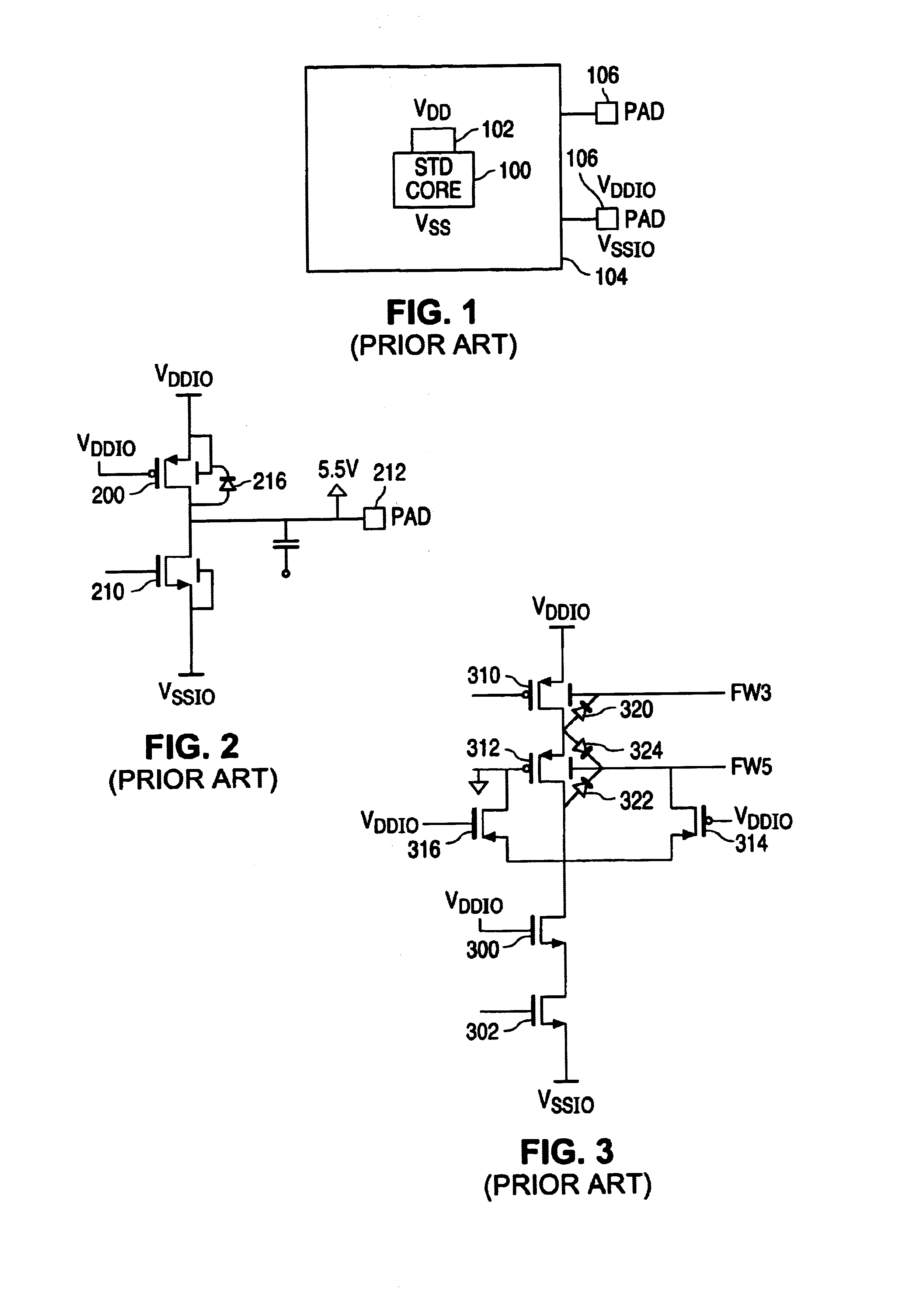Back-drive circuit protection for I/O cells using CMOS process
a back-drive circuit and i/o cell technology, applied in the direction of pulse technique, oscillation generator, reliability increasing modifications, etc., can solve the problems of sub-micron dual gate device problems, i/o cell heating and possible latch-up, oxide breakdown, etc., to enhance the tolerance of the drive circuit
- Summary
- Abstract
- Description
- Claims
- Application Information
AI Technical Summary
Benefits of technology
Problems solved by technology
Method used
Image
Examples
Embodiment Construction
[0020]The present invention proposes certain changes and additions to a cascoded driver circuit in order to improve tolerance under stress mode. In particular, the invention seeks to avoid gate oxide breakdown of the PMOS transistors by charging up the gates so that the gate-drain voltage is always less than 3.8 V. It also seeks to avoid current to VDDIO by switching the PMOS transistors off. This is achieved by charging the gates of the transistors to the same voltage as the high voltage node (drain) during stress mode. The invention also seeks to avoid parasitic well charging of the PMOS transistors by charging the wells to the same voltage as their respective high voltage nodes (drains). The invention also seeks to avoid drain-source junction breakdown of the upper PMOS transistor by reducing the potential difference across the transistor to less than 3.8 V. This is achieved by charging the drain of the upper PMOS transistor to approximately 3.3 V. The invention further seeks to ...
PUM
 Login to View More
Login to View More Abstract
Description
Claims
Application Information
 Login to View More
Login to View More - R&D
- Intellectual Property
- Life Sciences
- Materials
- Tech Scout
- Unparalleled Data Quality
- Higher Quality Content
- 60% Fewer Hallucinations
Browse by: Latest US Patents, China's latest patents, Technical Efficacy Thesaurus, Application Domain, Technology Topic, Popular Technical Reports.
© 2025 PatSnap. All rights reserved.Legal|Privacy policy|Modern Slavery Act Transparency Statement|Sitemap|About US| Contact US: help@patsnap.com



